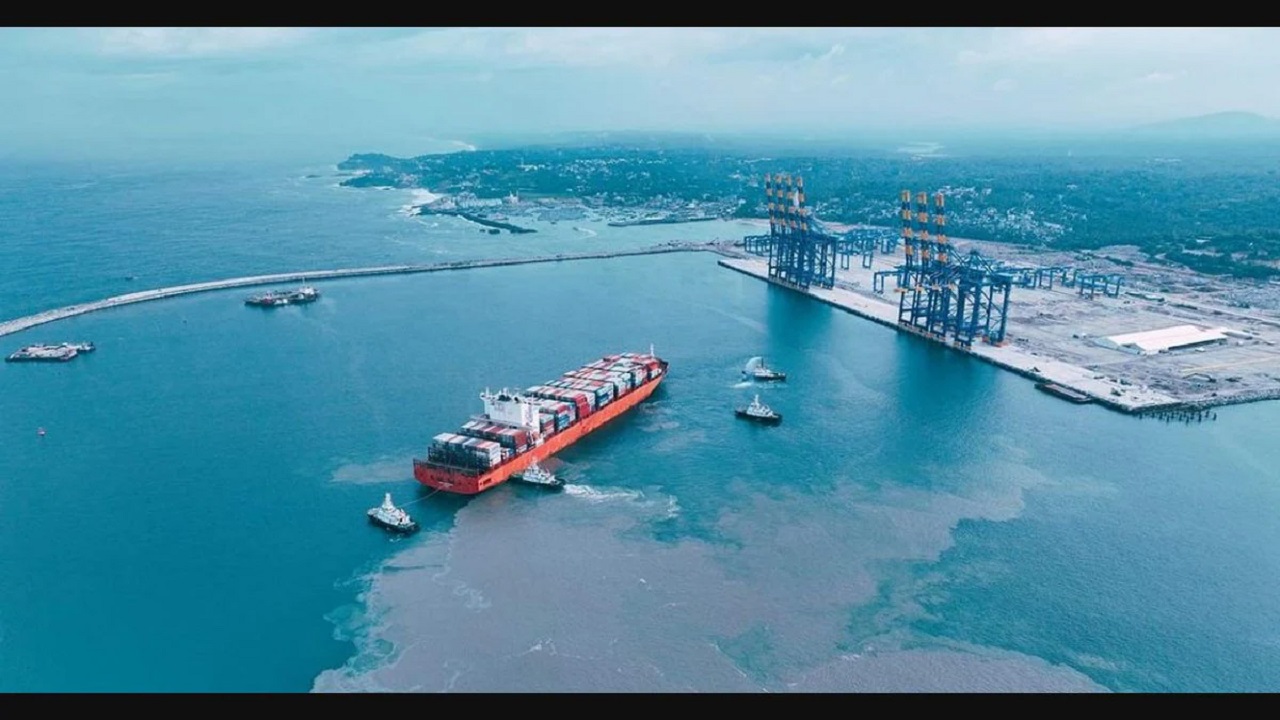Vizhinjam International Seaport: India’s Maritime Gateway
Why in News?
-
Prime Minister Narendra Modi inaugurated the ₹8,867 crore Vizhinjam International Deepwater Multipurpose Seaport in Thiruvananthapuram, Kerala.
-
It marks India’s first deep-water, semi-automated container transshipment port, operational under Phase 1.
-
The port aims to reduce India’s dependence on foreign transshipment hubs and position India as a key player in global maritime trade.
Context
-
Currently, ~75% of India’s transshipped cargo is handled by foreign ports like Colombo, Singapore, Klang.
-
India seeks to establish a domestic transshipment hub to capture this trade and reduce costs.
-
Vizhinjam’s commissioning aligns with India’s Sagarmala Programme to promote port-led economic growth and regional development.
Introduction
-
Vizhinjam is located in Thiruvananthapuram district, Kerala.
-
Positioned just 10 nautical miles from key international shipping lanes.
-
Offers a natural draft of 20 metres, enabling docking of Ultra Large Container Vessels (ULCVs).
-
Designed as a hub port for transshipment, logistics, and maritime trade in South Asia.
Historical and Strategic Significance
-
Historically known as Rajendra Chola Pattinam during the Chola dynasty.
-
Lost prominence under colonial shift to Madras and Cochin ports.
-
First study commissioned by Travancore State in 1940s; project realized after 80 years.
-
Geographically closest Indian port to international shipping lanes, enabling competition with Colombo and Singapore.
Phase 1 Development and Key Features
-
Built under Public-Private Partnership (PPP) at ₹8,867 crore:
-
₹5,595 crore – Kerala Government
-
₹2,454 crore – Adani Ports (concessionaire)
-
₹817.8 crore – Viability Gap Funding (Union Government)
-
-
Highlights:
-
20m natural depth
-
Semi-automated operations with women crane operators trained at community skill park
-
Operational from July 2024; commercial operations began December 2024
-
-
Achievements:
-
Target: 1 lakh TEUs/year → Actual: 6 lakh TEUs handled in initial months
-
280 vessels docked; 1.08 lakh TEUs handled in March 2025
-
Global Engagement and Milestones
-
Integrated into MSC’s Jade and Dragon shipping services.
-
Key milestones:
-
Docked MSC Claude Girardet (24,116 TEUs) – South Asia’s largest container ship
-
Handled 10,330 containers from MSC Anna in a single visit (Indian port record)
-
MSC Irina, world’s largest container ship, expected in May 2025
-
Future Expansion Plans (Phases 2 & 3)
-
Completion target advanced to 2028 (originally 2045).
-
Planned upgrades:
-
Capacity increase: 1 million → 4.87 million TEUs
-
Berth length: 1,200m → 2,000m
-
Additional investment: ₹20,000 crore
-
-
Environmental clearance granted – March 2025
-
Featured at World Economic Forum 2025, Invest Kerala Global Summit
Operational Challenges
-
Pending approval for Integrated Check Post (ICP) from Union Home Ministry.
-
Delays in ship handling due to lack of adequate support systems (e.g., 40 ships awaiting in Feb 2025).
-
Customs office opened recently; Port Health Office still awaited.
-
Last-mile connectivity and allied infrastructure require strengthening.
Associated Economic and Industrial Initiatives
-
Kerala Government initiatives:
-
Vizhinjam Development Zone and industrial corridor
-
Business centers near the port
-
Appointing a dedicated IAS officer for Vizhinjam Economic Growth Corridor
-
Promotion of shipbuilding, logistics, warehousing, clean bunkering (hydrogen, ammonia)
-
-
ANERT exploring green hydrogen and wave energy initiatives
Vision for Port-Led Growth
-
Proposal to declare Vizhinjam as a Special Investment Region (SIR).
-
Draft SIR Bill focuses on:
-
Creating a Special Economic Zone (SEZ)
-
Ensuring compensation and rehabilitation for landowners
-
Adopting global best practices (e.g., Shenzhen SEZ model)
-
-
Concerns:
-
Viability Gap Funding repayment may increase from ₹817.8 crore → ₹10,000 crore
-
Proposed Colachel port may affect Vizhinjam’s viability
-
Conclusion
Vizhinjam International Seaport represents a strategic step toward self-reliance in maritime trade, reducing dependency on foreign ports. Its success depends on effective state-centre coordination, addressing operational bottlenecks, and leveraging global shipping partnerships to establish India as a regional maritime leader.



.jpg)
Comments (0)